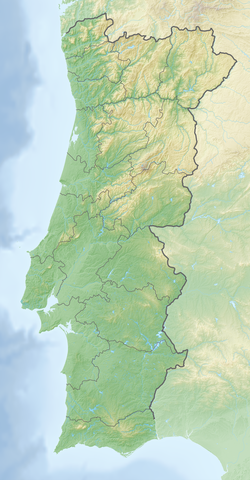
Back Alto Douro German Περιοχή Οινοποιίας Άλτο Ντούρο Greek Douro (vino) Spanish Alto Douro Finnish Douro (DOC) French Vinho do Douro Galician חבל היין אלטו דורו HE Douro Vinhateiro Italian アルト・ドウロ・ワイン生産地域 Japanese Вински регион Дуеро Macedonian
| UNESCO World Heritage Site | |
|---|---|
 Vineyards in Alto Douro | |
| Location | Trás-os-Montes e Alto Douro Province, Portugal |
| Criteria | Cultural: (iii)(iv)(v) |
| Reference | 1046 |
| Inscription | 2001 (25th Session) |
| Area | 24,600 ha (61,000 acres) |
| Buffer zone | 225,400 ha (557,000 acres) |
| Coordinates | 41°06′06″N 07°47′56″W / 41.10167°N 7.79889°W |

Douro is a Portuguese wine region centered on the Douro River in the Trás-os-Montes e Alto Douro region. It is sometimes referred to as the Alto Douro (upper Douro), as it is located some distance upstream from Porto, sheltered by mountain ranges from coastal influence. The region has Portugal's highest wine classification as a Denominação de Origem Controlada (DOC) and is registered as a Protected Designation of Origin under EU and UK law, and as a Geographical Indication in several other countries through bilateral agreements.[1] While the region is best known for Port wine production, the Douro produces just as much table wine (non-fortified wines) as it does fortified wine. The non-fortified wines are typically referred to as "Douro wines".
Alto Douro was one of the 13 regions of continental Portugal identified by geographer Amorim Girão, in a study published between 1927 and 1930. Together with Trás-os-Montes it became Trás-os-Montes e Alto Douro Province.
The style of wines produced in the Douro range from light, Bordeaux-style claret to rich Burgundian-style wines aged in new oak.[2]
- ^ "oriGIn Worldwide GIs Compilation". Origin-GI. Archived from the original on 31 August 2021. Retrieved 31 August 2021.
- ^ T. Stevenson "The Sotheby's Wine Encyclopedia" pg 331 Dorling Kindersley 2005 ISBN 0-7566-1324-8
